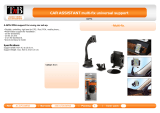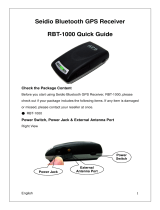
iii
4.1.6.Factory Reset: .....................................................................................15
4.1.7. Disconnect..........................................................................................15
4.2. Navigation Page ............................................................................................16
4.2.1. NMEA Mode / SiRF Mode ................................................................16
4.2.2. Degraded Mode..................................................................................16
4.2.3. Elevation mask...................................................................................16
4.2.4. DOP Mask..........................................................................................16
4.2.5. SBAS Mode .......................................................................................16
4.2.6. Default................................................................................................16
4.2.7. OK......................................................................................................16
4.3. Mode: ............................................................................................................17
4.3.1. Maximum Navigation Performance:..................................................17
4.3.2. Optimal Battery Use: .........................................................................17
4.3.3. Intelligent Switch:..............................................................................17
4.3.4. Manual Setting:..................................................................................17
4.4. Configuration ................................................................................................18
4.4.1. Change Password ...............................................................................18
4.5. About.............................................................................................................18
5. Software Application User Manual for PC ........................... 20
5.1. Application User Interface ............................................................................20
5.2. Connection Page ...........................................................................................21
5.2.1. Device Name......................................................................................21
5.2.2. Change ...............................................................................................21
5.2.3. COM Port...........................................................................................21
5.2.4. Connect ..............................................................................................21
5.2.5. Auto Scan ...........................................................................................22
5.2.6. Factory Reset: ....................................................................................22
5.2.7. Disconnect..........................................................................................22
5.3. Navigation Page ............................................................................................22
5.3.1. NMEA Mode / SiRF Mode ................................................................22
5.3.2. Degraded Mode..................................................................................23
5.3.3. Elevation mask...................................................................................23
5.3.4. DOP Mask..........................................................................................23
5.3.5. SBAS Mode .......................................................................................23
5.3.6. Default................................................................................................23
5.3.7. OK......................................................................................................23
5.4. Mode .............................................................................................................24



























